Sample 1

comparing gathering effect using different fabric materials and stitch

Presenting data using gathering
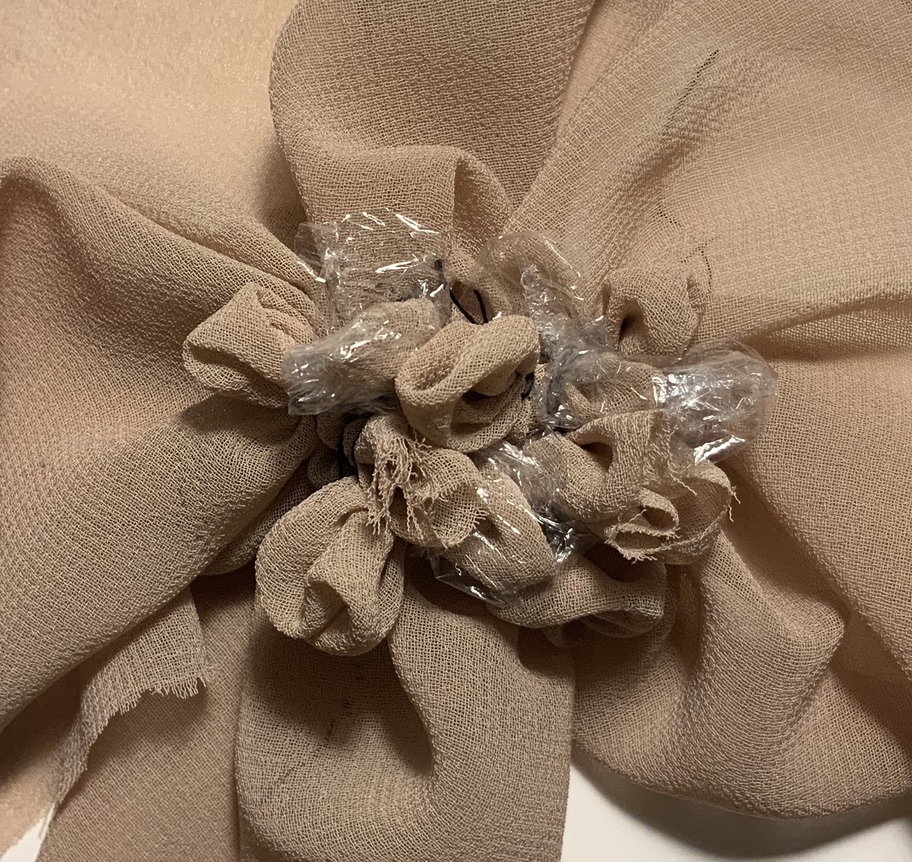
Cropped image of gathering sample
For question 2 I created a quick sample exploring gathering. I did a running stitch through cotton to test out the effect and on synthetic fabric using the sewing machine. I much preferred the gathering effect on the synthetic fabric due to its lighter density. I attempted to do a running stitch through the fabric in the shape of circles however found this extremely challenging. I eventually turned to knotting thread around each circle to create a cluster of 10 gathers. The 3 gathers with clingfilm layered on top represent those adults who answered ‘more’, the 2 gathers with holes cut out represent those adults who answered ‘less’ and the 5 that remained unchanged represent those adults who answered ‘same’. I wanted to incorporate clingfilm into this sample to connect it back to my theme.
Sample 2
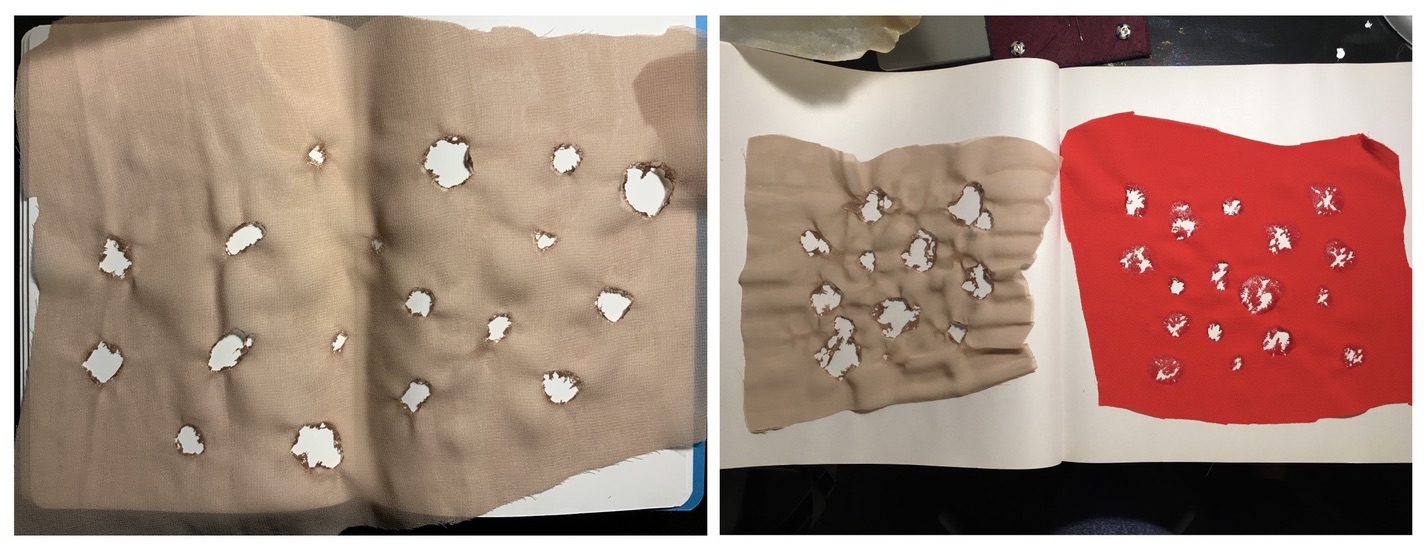
Using heat for fabric manipulation

Finished sample
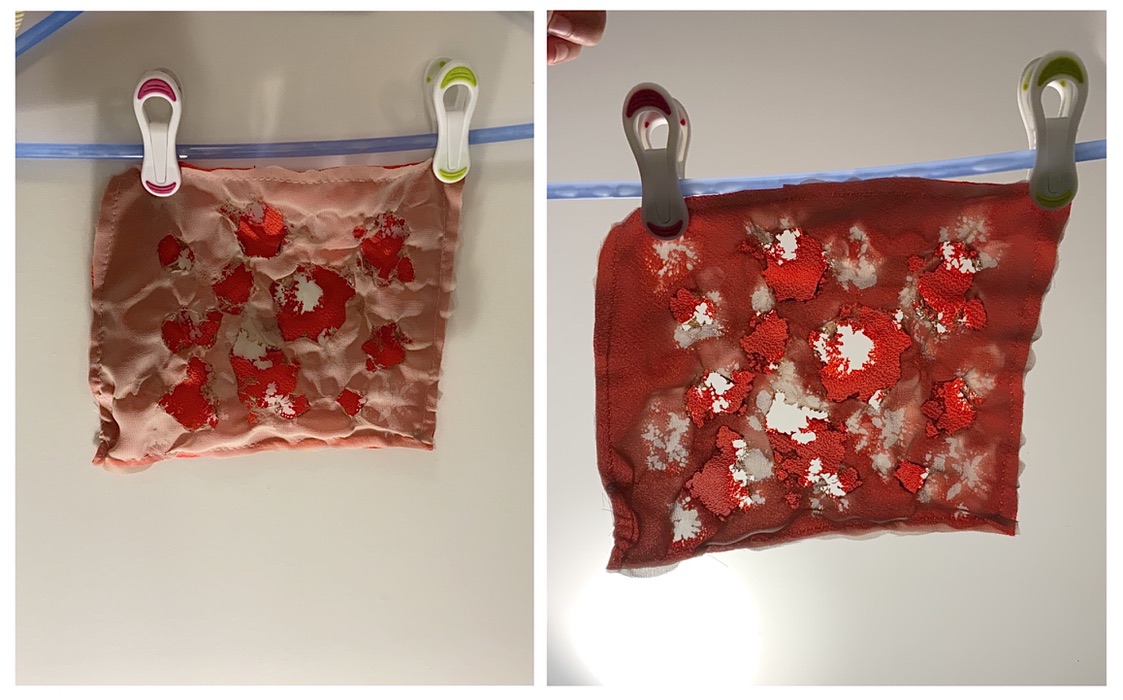
Viewing sample in different lightings
This sample of data from question 10 explores heat as a fabric manipulation technique. I used polyester for both layers. There are 10 burn holes in top layer representing young adults those who answered ‘yes’ and the 17 burn holes in the bottom layer representing young adults who answered ‘no’. I stitched the layers together using a sewing machine.
I thought the use of polyester for this experiment would be interesting for the melted outline of each hole as a result of burning and the transparency of the fabric so the layer underneath would be visible as well.
Sample 3
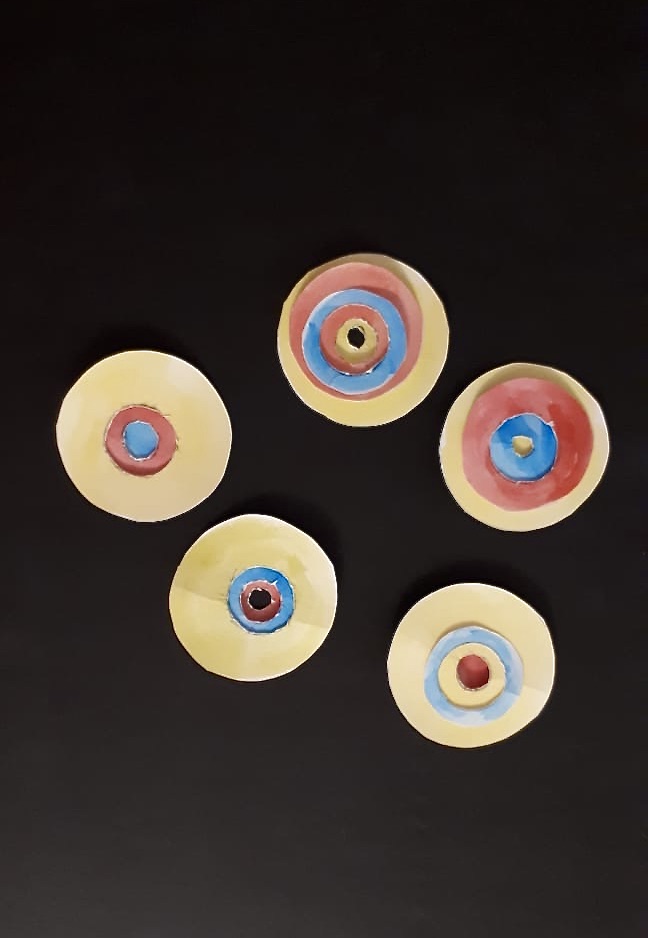
Paper sample exploring idea

Sample created using fabric and machine stitch
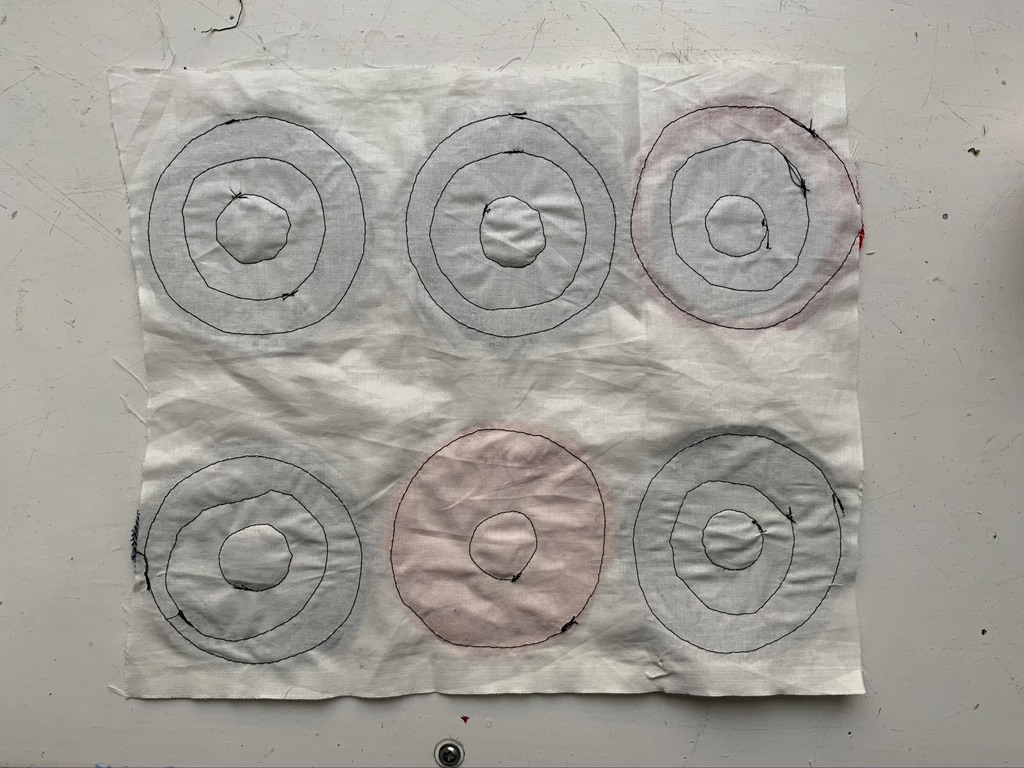
Back side of sample showing stitch
This sample shows data taken from questions 7-12. each set of circles represents one question. Initially I tested the idea out using paper. In my final sample I used red polyester as the top layer to represent those who answered ‘more’, orange cotton fabric to represent those who answered ‘less’ and blue denim as the bottom layer to represent those who answered ‘same’. The circle sizes ranging from large, medium to small were dependent on the total number people who answered the same from most to least. I used a sewing machine to stitch each circle layer together onto the base fabric. This technique is called applique. Using reverse applique I cut out the centre of each circle where necessary to expose the layers underneath.
Sample 4
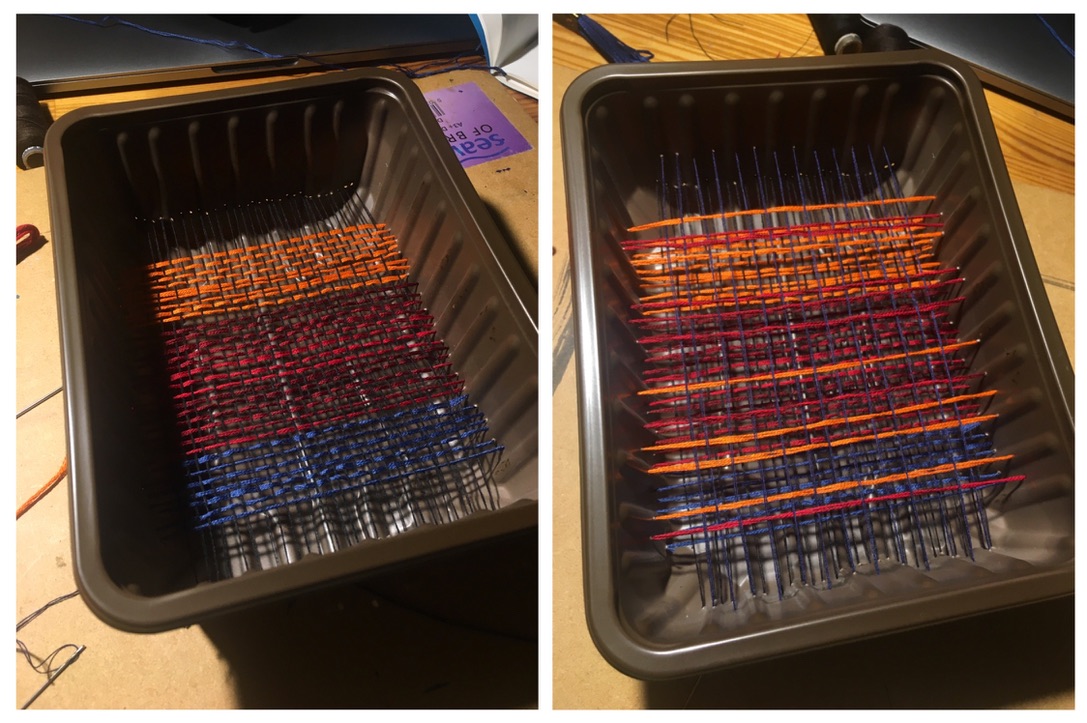
Images showing weave process
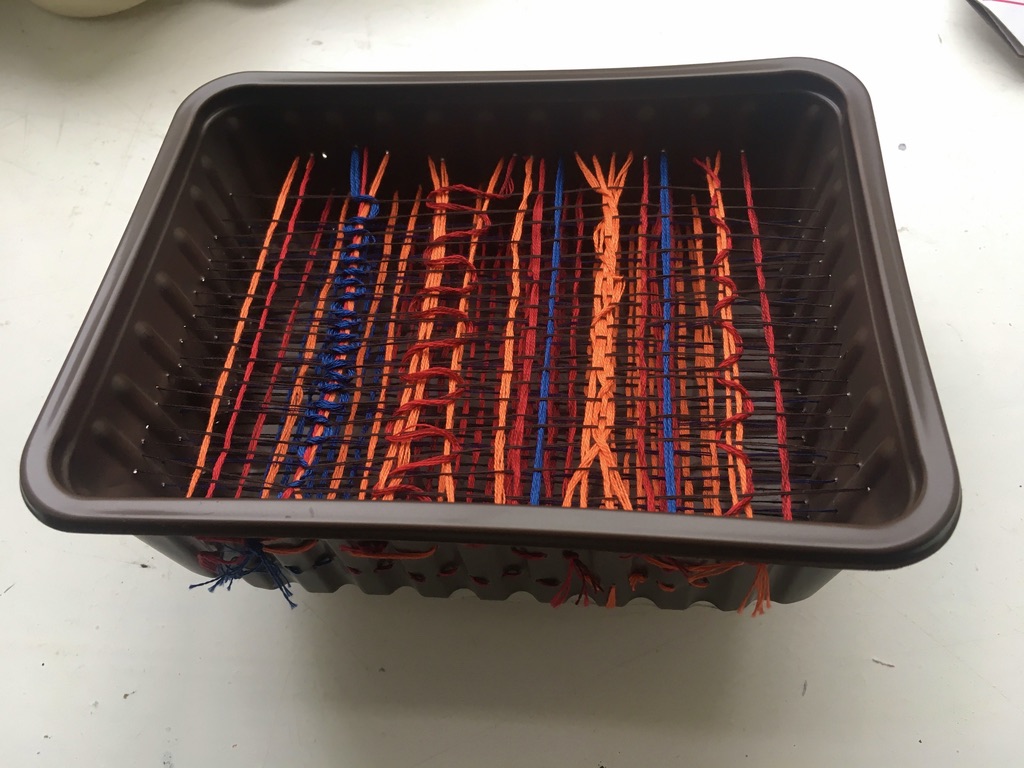
Completed sample

Front view of weave sample
This sample is a developed concept that uses weaving as a technique to present data from question 2. I used a mushroom container to connect my sample to my theme. There are 3 layers of weaving. The bottom layer are the total number (30) of those who answered ‘same’ to eating healthy. The middle layer are those who answered ‘less’ (13) and the top layer represents those who answered ‘more’ (21) the weaves were divided into red, orange and blue for each layer to separate the 3 age groups. Orange being teenagers, red being young adults and blue being adults. the parallel lines can represent unity or the commonality in answers. I intertwined some of my weaves to emphasize this connection.


Leave a Reply